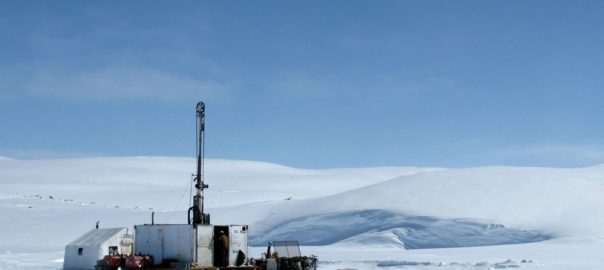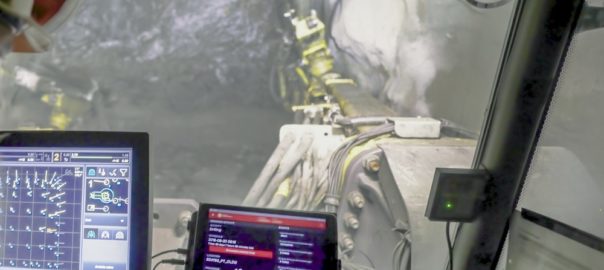Weir Minerals’ Cavex® hydrocyclones have been put to the test at a diamond mine in South Africa’s Northern Cape Province, proving the technology can be applied in dense medium separation (DMS) plants treating diamondiferous material, according to the company.
In her presentation to the Southern African Institute of Mining and Metallurgy (SAIMM) diamond conference in Johannesburg in 2018, Weir Minerals Africa’s Senior Process Engineer, Boitumelo Zimba, said the hydrocyclones improved plant efficiency and produced 40% more tonnage than the mine’s target.
“As the Cavex hydrocyclone is tried and tested in hard-rock mining and coal classification, the Cavex 360° laminar spiral inlet profile was used as a basis for the development of a dense medium cyclone,” Zimba said. “Individual casting patterns were developed and produced in order to fabricate the Cavex dense medium hard chrome cyclone with the exact laminar spiral feed chamber that exists when moulded out of rubber.”
The customer required a solution that could offer at least six months wear-life, and a probable error of separation (Ep) of no greater than 0.08 at a cut density of 3.1 t/m³. Tracer tests were used to monitor the efficiency of the separation achieved by the Cavex hydrocyclones to ensure all of these requirements were met.
“Ep values achieved were 0.042 for the 4 mm tracer tests and 0.035 for the 8 mm tracer tests, which were below the set maximum target of 0.08 from the mine,” Zimba said. “This highlighted the benefits and improved efficiencies of the Cavex laminar spiral feed inlet.”
The lower the Ep – or probable error of separation – the more efficient the separation; it is defined as half the difference between the density at which 75% is recovered to sinks, and that at which 25% is recovered to sinks, Weir said.
“The customer’s tracer tests on the Cavex hydrocyclones showed that cut points of 3.08 t/m³ were achieved for both the 4 mm and 8 mm tracers,” Zimba said. “This was within the performance levels of 3.1 t/m³ that the customer had specified.”
Initially, the hydrocyclones were commissioned to treat only fines at the diamond plant – the minus 8+1 mm material. Later however, the mine decided to run a combined DMS, after which the full DMS size range of minus 20+1 mm was treated through all the fines DMS hydrocyclones.
“The unique design of the laminar spiral inlet geometry delivers sharper separation and maximises capacity while delivering a longer wear-life than conventional involute or tangential feed inlet designs,” Weir says. “By providing a natural flow path into the hydrocyclone body the design allows the feed stream to blend smoothly with the rotating slurry inside the chamber, reducing turbulence and improving separation efficiency.”
Zimba explained: “Combining our cone and spigot components in the hard metal range is an important contribution to the reduction in turbulence. Another vital factor is the Cavex inlet design with 360° scroll; this design was proven through extensive computational fluid dynamics analysis as well as our multiple installations to date.”
Weir Minerals also conducts ongoing research and development on methods to minimise turbulence on assembled casted components. The Cavex hydrocyclones are designed with a variety of inlet sizes to accommodate a wide top size at specified medium-to-ore ratios. The inlet sizes range from 0.2 to 0.33 as a function of the hydrocyclone diameter.
“The Cavex CVX hydrocyclone also has a wide range of vortex finder sizes to maintain separation efficiency at different operating yields and spigot sizes. The vortex finder sizes range from 0.4 to 0.5 as a function of cyclone diameter, and are designed to maintain a strong air-core at different spigot sizes,” Weir says.
To prolong life and efficiency, the hydrocyclones can also be manufactured with different materials.
“Cavex CVXA hydrocyclones are hard-wearing and are cast in 27% chromium iron for maximum abrasion resistance; components are designed for ease of maintenance, with all surfaces joined with a layer of epoxy cement,” the company says.
Weir Minerals Africa operates two foundries in South Africa – one at its Isando facility and the other at its Heavy Bay Foundry in Port Elizabeth. “This allows the organisation to cast items in-house leveraging its local foundry personnel’s knowledge, experience and expertise, ensuring that the highest standards are maintained,” Weir says.
“This approach ensures optimal life of the hydrocyclone in operation, and reduced maintenance costs by replacing worn parts in situ. It also eliminates the risk of any adverse effects on performance arising from mixing old and new hydrocyclone components. Further, safety on site is enhanced by minimising the maintenance work necessary on the installed hydrocyclones.”
Zimba said future work will include the investigation of various alloys to combat high wear rates on some of the hydrocyclone components, in particular the vortex finder and the cone sections. “This will allow longer operation and plant stability,” she said.








